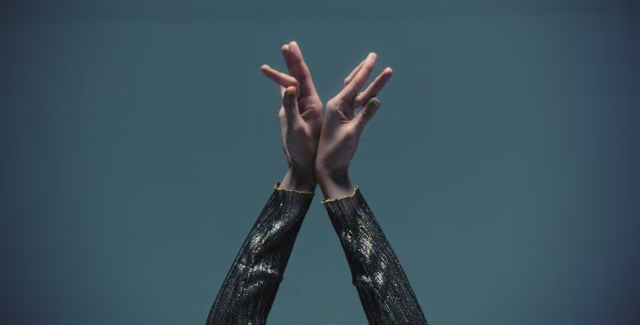
Still from the film The Future is Fluid
As reported by the Financial Times, a recent study by trends-forecasting consultancy The Future Laboratory and the luxury agency collective Together Group concluded that to remain competitive, beauty brands “must go beyond aesthetics and embrace a 360-degree approach that balances measurable performance with personal, emotional and cultural significance.”
Similarly, the latest Highsnobiety report finds that “alignment with personal style and identity” is now the top motivator behind luxury purchases. “As opposed to being shown brand worlds into which they’re expected to fit,” the report notes, “consumers want products that will fit into their lives as is.”
In this context where consumers are choosing products that reflect their own world, brand strategy has become less about broadcasting messages and more about interpreting—and embedding within—cultural meaning. The question is: how can a brand exist credibly, consistently, and consciously in a fragmented cultural landscape where identity is fluid, authority is decentralized, and consumers are increasingly values-driven?
Glossy aspiration or a universally polished message no longer suffice, and cultural fluency has become the key ingredient of modern brand strategy, placing brands in the pivotal position to both mirror and shape culture. Across sectors, brand behavior is being shaped by an array of emerging forces—not just tactical or aesthetic in nature, but rooted in deeper societal and generational change. These forces can be broadly grouped into three macro categories: cultural complexity, with the rise of hybrid identities, shifting power dynamics, and heightened expectations of ethical accountability; media logic, defined by the dominance of algorithmic aesthetics and platform-native content formats; and narrative strategy, with its new approaches to storytelling driven by sustainability, localized engagement, and the decline of traditional aspiration.
These categories offer a framework for understanding the paradigmatic shifts underway. In the sections that follow, each will be explored through key developments, brand case studies, and strategic implications for navigating a culturally fragmented, platform-dominated, post-aspirational market, ultimately exposing the cultural forces reshaping how brands speak, how they behave, and what they stand for.

© Copyright / Nimativ Limited trading as Multivitamin Studio
Decentralized creativity and the creator economy
While culture used to flow top-down, with taste set by institutions and amplified by mass media, now algorithmic platforms with a strong participatory nature like Instagram, TikTok have turned the tide, giving way to a decentralized cultural production led by creators, micro-communities, and digital subcultures. Of course, brands can still operate strategically, but when it comes to production, they now more than ever hold the role of co-creators, leveraging digital communities to tap into cultural currents authentically.
Not surprisingly, according to a Wall Street Journal / Deloitte analysis, the creator economy, from influencers to niche-focused creators, is projected to reach $500 billion by 2027.
Clinique’s recent TikTok campaign exemplifies this shift towards co-creation. The global skincare brand initially saw success through the viral #TikTokMadeMeBuyIt trend, which led to a sellout of its Almost Lipstick in the shade Black Honey. Building on that momentum, the brand promoted its Better Clinical Serum Foundation SPF 20 through a blend of creator-generated content and TikTok search advertising. By partnering with prominent lifestyle and beauty creators—and capturing high-intent search traffic via tutorials and before-and-after application videos—Clinique achieved a 441% increase in conversions and a 51% boost in page views. The campaign, later highlighted as a success story by TikTok, demonstrates the power of empowering creators and aligning with native platform logic to build closeness and credibility (but more on that later).
Another example comes from mobile accessories brand Ideal of Sweden, an early adopter of TikTok’s Smart+ campaign format. The brand used the tool to drive conversions, engage new audiences, and re-engage existing ones. On the creative front, they leveraged a mix of in-house assets and user-generated content sourced through TikTok’s Creator Challenge, the platform’s proprietary creator collaboration tool, enabling both creative scale and authentic, performance-driven storytelling. As a result, the brand saw a 25% increase in Return on Ad Spend and a 56% lift in click-through conversion rate, reflecting more resonant targeting and creative execution.

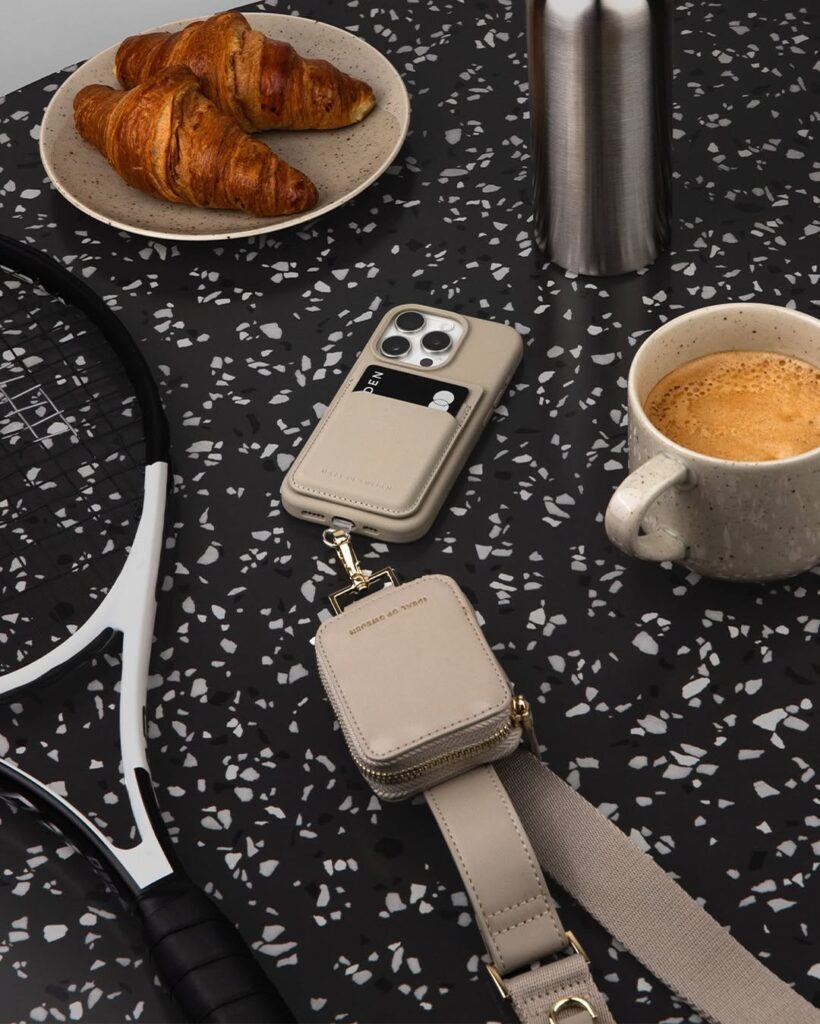

Courtesy of Fenty Beauty
Culture and identities in flux
Contemporary identity is not linear, fixed, or easily defined, demanding a more nuanced, layered approach to brand storytelling, one that embraces the blurring of categories. Aesthetic codes, too, are increasingly hybrid.
In beauty, few brands shifted the status quo like Fenty Beauty. Yes, Rihanna’s star power and LVMH backing laid the foundation, but the brand’s real breakthrough was confronting the industry’s historic lack of diversity, from unrealistic beauty ideals to the blatant lack of representation. Fenty launched with 40 foundation shades (since expanded), paired with a marketing campaign that was unapologetically inclusive. Time magazine named it one of the 25 Inventions of 2017. Suddenly competitors scrambled to diversify their offerings to accommodate a wider variety of skin tones. What Fenty did was make makeup a vehicle for representation, connecting with consumers who had long felt invisible. It showed the importance of being seen while also proving the commercial value of inclusion. Tellingly, the darkest shades sold out first—which is why, today, for any brand (not just in beauty), inclusivity and growth strategies are inevitably linked.
The shift extends across industries. Speaking to Vogue Business a few years ago, fashion critic and diversity consultant Ben Pechey noted that some retailers still assumed mainstream approach guarantees the widest reach, yet adopting a broader inclusive approach, including size, genderqueer, race and disability, would help brands reach 60 per cent more consumers according to The Diversity Standards Collective. For brands that moved first, the results have spoken for themselves. Stella McCartney’s Shared collection, for example, was designed with Gen Z priorities in mind: fluidity, inclusivity, activism. Gucci is another high-profile adopter. In partnership with CHIME FOR CHANGE, the brand presented The Future is Fluid, a short film that premiered at the Sundance Festival, about gen Z and its pursuit of fluidity. Also, the brand’s MX project was specifically marketed as “gender fluid” and promoted through collaborations with LGBTQ+ artists and zines like Frankenstein, a medium with roots in queer activism. The thing is, hybrid identities resist reductive messaging. So this isn’t about ticking boxes but responding to real, lasting cultural change and acknowledging lived realities.

Courtesy of STELLA MCCARTNEY
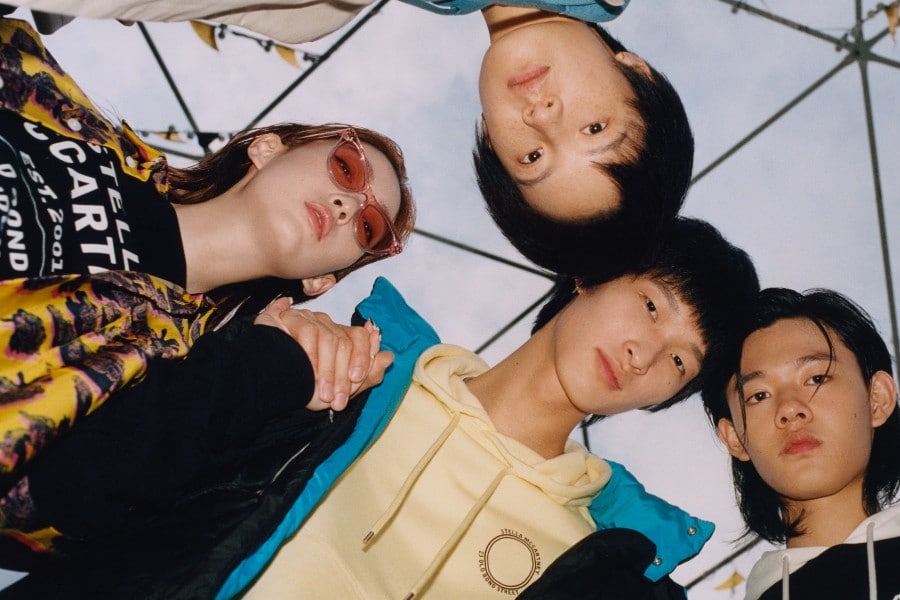
Courtesy of STELLA MCCARTNEY

Sage Grace Dolan-Sandrino, @thhrift

Kendra
Branding in the era of ethical resonance
Inclusivity may offer brands access to a wider audience, but more importantly, it reflects the growing importance for brands to align with their audience’s values, particularly among younger consumers. What today’s inclusive collections signal, compared to the “unisex” offerings of the past, for example, is a deeper commitment to representation and equality. In fact, consumers increasingly demand that brands stand for more than profit—especially on issues of climate, equity, labor, and inclusion. And more than statements, what’s expected is action and accountability. Sustainability narratives are especially fraught, with fast fashion labels frequently marketing “eco-friendly” lines while maintaining exploitative supply chains. Increasingly, consumers can see through this and expect external messaging to align with operations behind closed doors. Now more than ever resonance carries an ethical dimension.
Few brands have embodied this as consistently as Patagonia. Founded in 1973 by California climber and blacksmith Yvon Chouinard, the company pioneered socially responsible business long before it was trending. It introduced on-site childcare, offered maternity benefits, and worked to eliminate harmful materials and unethical labor from its supply chain, popularizing organic cotton and recycled textiles in the process. It has donated some of its profits to environmental causes for decades. While not without controversy, the result of long-standing alignment between values and operations is a brand ranking as the most reputable label in the US in 2023. Compare that to Bud Light’s public stumble the same year, where a short-lived partnership with trans influencer Dylan Mulvaney sparked a dual backlash: from conservatives who opposed the move and progressives who criticized the brand’s failure to stand by it. The misstep was the lack of both genuine alignment and consistency, which eventually alienated both sides.

Image via arc-x-researchtm

Image via arc-x-researchtm
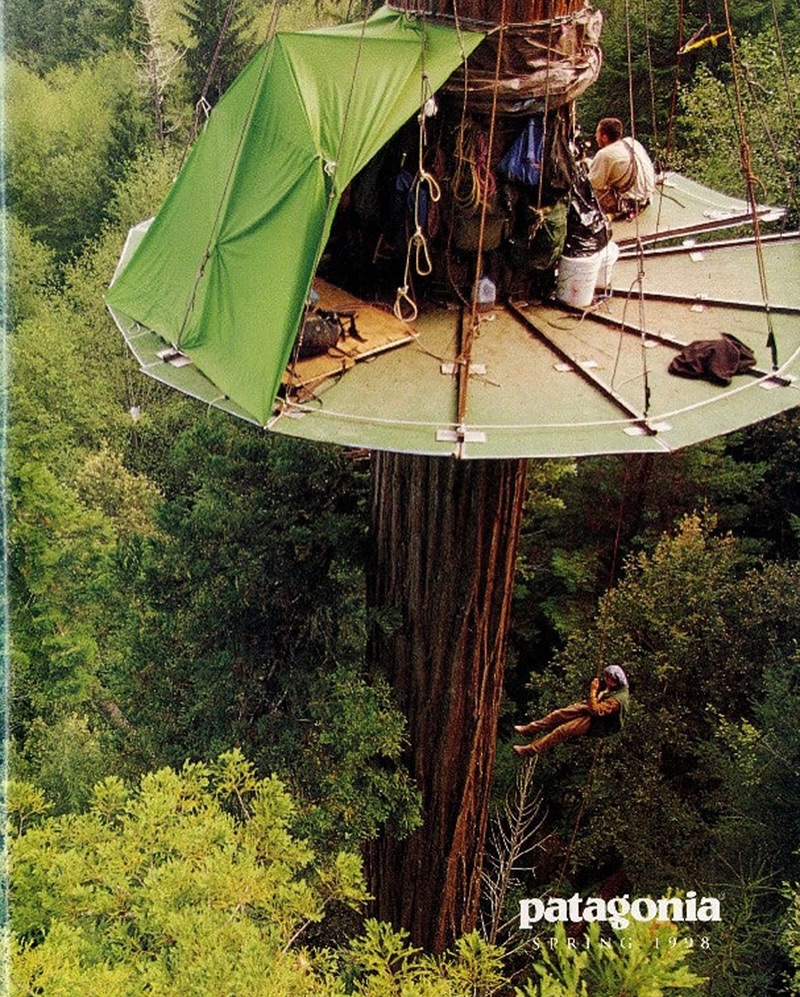
Image via arc-x-researchtm

Image via arc-x-researchtm
Memory in the feed
Another cultural trend shaping brand behavior is the resurgence of nostalgia. In a fragmented, fast-moving culture defined by algorithmic feeds and fleeting trends, nostalgia offers the emotional weight of familiarity. As Highsnobiety put it in their report, “Within our lifetimes, new has become synonymous in many ways with worse: made cheaply, reactively, perhaps with AI, and limited creatively by the demands of a global market. Laments of nothing ever really being new and of algorithm fatigue hindering a sense of discovery make that quest for a hot take feel ever more beside the point.”
And so, the old becomes new again, not just because it’s recognizable, but because it carries the texture and intentionality that seems to be missing from much of what’s new. Many have also pointed out that eras of turmoil and uncertainty like ours may drive a penchant for reaching back to a time when the world felt less precarious. Luxury brands have responded accordingly, tapping into collective memory and reviving past hits through archival projects like Dolce & Gabbana’s and Prada’s Re-Edition collections.
But nostalgia is a powerful tool that must be handled carefully. Referencing the past is not inherently safe and requires cultural sensitivity. Levi’s, for example, has leaned into its American heritage while reinterpreting the frontier myth not as a symbol of conquest, but of reinvention and resilience. This reframing allows the brand to maintain emotional resonance with audiences who crave authenticity, while acknowledging the moral complexity embedded in historical narratives. Similarly, the Y2K revival doesn’t simply replicate early-2000s aesthetics, it reinterprets them for Gen Z, often through a lens of irony, critique, or hyper-stylization. Whether it’s low-rise jeans, platform soles or rhinestone logos, what returns is rarely untouched.
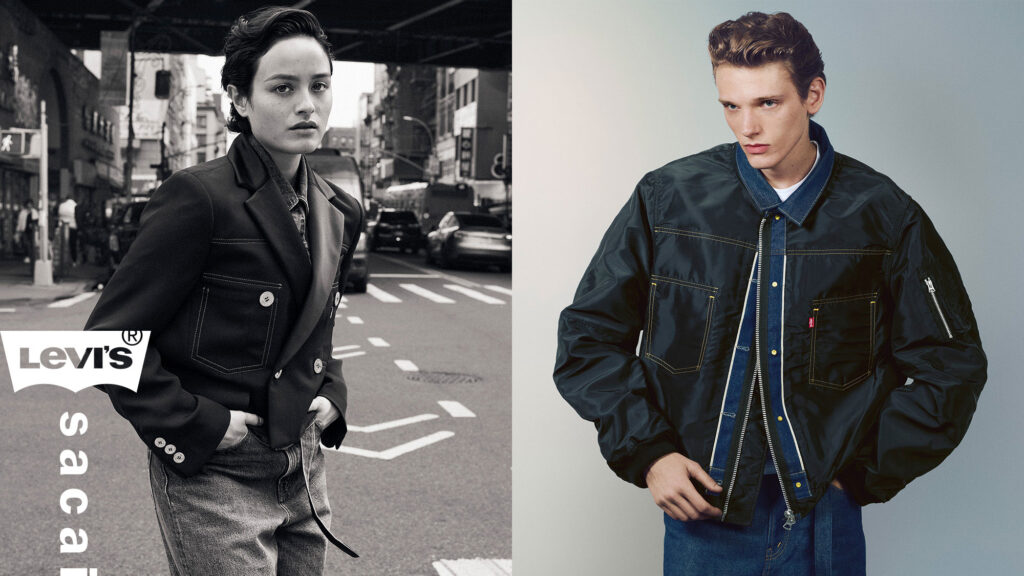
Courtesy of Levi’s® and sacai
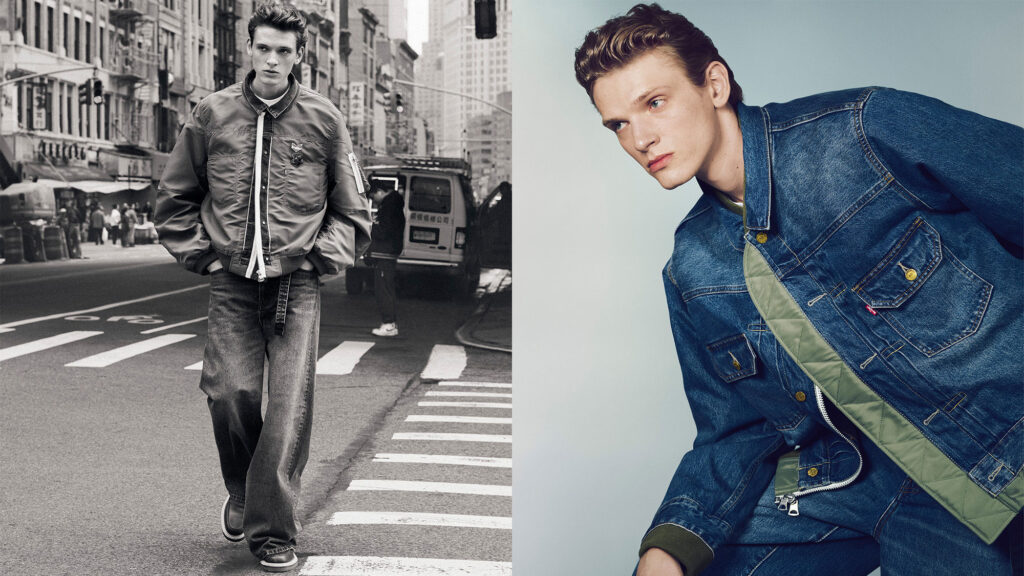
Courtesy of Levi’s® and sacai
Platform logic and the rise of “vibes”
Modern branding is inseparable from platform logic. The cultural infrastructure shaped by giants like TikTok, YouTube, Instagram, and Twitch doesn’t just dominate distribution but shapes the creation and perception of taste and culture itself. Entire aesthetics—Cottagecore, Weirdcore, Coquette—have risen algorithmically, generating self-contained visual languages that define micro-eras in digital culture. In this context where platforms are ecosystems with their own formats, vocabularies, and tempo, successful brand campaigns are created natively, designed for short-form video, livestreams, and “core”-driven trends. But this agility comes with trade-offs. The rapid churn of microtrends has led many brands to chase virality at the expense of cultural depth, which contributes to content fatigue and risks eroding strategic coherence too. Indeed, one of the key challenges for brands today is responding in real time without becoming disposable.
This shift has also reshaped brand voice, replacing polished, corporate tones with playful memetic language designed for engagement. Duolingo’s irreverent TikTok content driven by its “unhinged” owl mascot is a case in point. Ryanair’s snark and Wendy’s Twitter roasts operate in the same register, embracing a roguish, tongue-in-cheek tone. But walking the fine line between relevance and trivialization requires skill, and, without substance, the risk of being forgettable—or worse, cringe—is always around the corner.
Now, some observers suggest we’re moving past the age of hyper-specific microtrends into the more emotionally resonant, mood-oriented era of ‘vibes.’ A vibe it’s a sensibility, lifestyle, a way to move through the world. Among the “vibes” Vogue Business predicted for 2025 are “chaotic customization,” defined by hands-on creativity and resistance to over-curated aesthetics, and “niche sports,” where small-scale fitness subcultures shape style beyond surface references. The way brands can navigate the “vibe economy” is by resisting the urge to chase every fleeting trend and instead aligning with cultural moods that feel authentic to their identity. This means investing in real-world experiences and adopting “niche at scale” strategies—finding depth in specificity and community, rather than breadth in virality.

Photography courtesy of Getty Images

Courtesy of MIU MIU

Photography by Jun Sato, courtesy of Getty Images

Courtesy of Nike
Glocalism and hyperlocal storytelling
By now, it has become clear that consumers want to see themselves reflected in values, in humor, in cultural reference points. This is why the days of one-size-fits-all campaigns are fading. As audiences become more attuned to nuance, global brands are increasingly turning to hyperlocal strategies as a core element of their storytelling. The challenge is to adapt authentically without fracturing the integrity of a global identity.
Nike’s 2020 You Can’t Stop Us campaign series is a model of this balancing act. While unified by a high-gloss, cinematic style and a global message of perseverance—particularly poignant in the context of the COVID-19 pandemic—each regional execution reflected the voices and visuals of its local audience. In the Middle East, the spotlight was on hijabi athletes; in Japan, the focus, not without controversy, turned to three young female footballers who faced bullying and racism. The result is a campaign that speaks universally, but feels personal wherever it lands.
Post-aspirationalism and the new luxury
With the generational shift and the rising influence of younger, more value-driven consumers, traditional signifiers of wealth and status are losing relevance, pushing brands to recalibrate what it means to be desirable. In recent years, the exclusivity and sheen that once defined luxury have been replaced by straightforwardness, understatement, and accessibility. Loud logos and overt displays of affluence have given way to the neutral tones and simple silhouettes of the so-called “quiet” or “redefined” luxury. Last year’s most coveted items—down-to-earth, gimmick-free pieces like Adidas Sambas, archival Armani blazers, jelly flats from The Row, and monochrome Mephisto sneakers—reflected this sensibility. As Highsnobiety put it, “The top drivers of desirability for today’s luxury consumer—craftsmanship, uniqueness, clear values, and independence—are all related to the quality and the story behind a brand or product, not the marketing of it.”
In this post-aspirational age, plainness has become a mark of credibility. “Plainness is eternal,” notes brand consultant Chris Black. “The logos and trends will come and go, but understated, plain dressing is cool and not affected.” This is clearly visible in recent runway trends too, where nearly every major fashion house has reinterpreted humble staples—a slouchy leather bag, a chore coat, a polo shirt—as new symbols of refined taste. The shift is not just aesthetic, and with broadening consumer fatigue, brands scramble to appear real and relatable to connect with consumers.

Courtesy of adidas
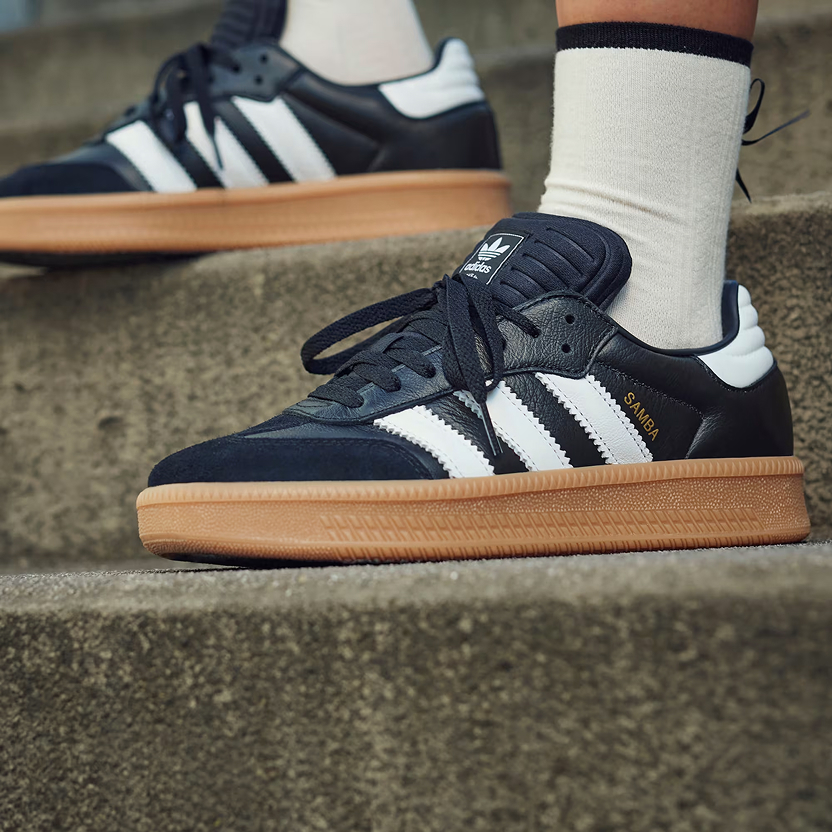
Courtesy of adidas
Looking ahead: the future of cultural branding
Identity, technology, and community evolve at speed, prompting brand relevance to hinge more and more on cultural fluency, rather than on mass appeal. That doesn’t mean chasing every trend. Quite the opposite. While it’s essential for brands to interpret and reflect cultural signals, consistent and intentional storytelling is crucial. “People now want something that resonates rather than dictates,” notes merchandising consultant Luigi Bernasconi. “In this reset, the brands that will thrive are the ones that stand for something beyond hype.”
And yet, even as brands are being asked to listen more closely, adapt more quickly, and show up more meaningfully, a deeper layer of responsibility is emerging. No corporation is a moral compass, but alongside asking how they can stay relevant they should also ask what kind of future do they want to help create? What stories are worth telling?
A recent Financial Times article asks “Why the world fell out of love with luxury” examining the identity crisis at the heart of the industry. “Our old status symbols are dead and luxury brands killed them,” says Brand strategist Eugene Healey. Analysts suggest the next evolution of luxury will be intrinsically behavioral and human, grounded in meaning, experience, and lived values. Perhaps, in the end the biggest bet for brands is on embracing the power and responsibility to shape the world we live in.
Words: Benedetta Ricci

